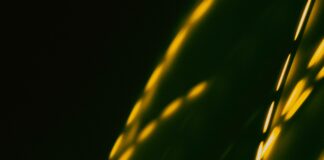Artificial Embryos: Unlocking New Avenues in Developmental Biology
In the realm of developmental biology, a groundbreaking innovation has emerged that has captured the imagination of scientists and researchers around the world: artificial embryos. These remarkable creations hold the potential to revolutionize our understanding of embryonic development, reproductive technologies, and even shed light on the origins of life itself. Artificial embryos, often referred to as synthetic or in vitro embryos, are engineered constructs designed to mimic the early stages of natural embryonic development. By replicating key biological processes and interactions, these artificial embryos provide a unique window into the intricate world of embryogenesis.
At their core, artificial embryos embody the fusion of cutting-edge scientific knowledge and advanced technological capabilities. With the ability to self-organize and exhibit cellular behaviors akin to those seen in natural embryos, these creations represent a significant leap forward in our ability to manipulate and study early development. The concept of generating artificial embryos is rooted in the desire to delve deeper into the mechanisms that orchestrate the formation of complex organisms, as well as to address fundamental questions about the beginning of life. As researchers explore the potential applications of artificial embryos, ethical considerations and societal implications come to the forefront, underscoring the need for thoughtful discourse and regulatory frameworks.
The journey towards the creation of artificial embryos intertwines disciplines such as developmental biology, stem cell research, tissue engineering, and bioinformatics. Scientists have long sought to decipher the intricate choreography of events that unfold during embryogenesis, aiming to uncover the molecular cues, cellular interactions, and genetic regulations that shape the early stages of life. The emergence of induced pluripotent stem cells (iPSCs) added a new dimension to this endeavor, enabling the reprogramming of adult cells back to a pluripotent state reminiscent of embryonic stem cells. This breakthrough technique paved the way for the manipulation of cellular fates, leading to the formation of simple structures reminiscent of embryonic tissues.
Artificial embryos typically begin as aggregates of stem cells that, under carefully orchestrated conditions, initiate a series of developmental processes akin to those in natural embryos. The self-organization of cells into distinct layers and structures, a phenomenon known as gastrulation, marks a significant milestone in the development of artificial embryos. This intricate process involves intricate signaling pathways and cellular movements that ultimately give rise to the basic body plan of an organism. As artificial embryos recapitulate these steps, they offer an unprecedented opportunity to observe and manipulate developmental pathways, potentially shedding light on congenital diseases, birth defects, and regenerative medicine strategies.
One of the remarkable aspects of artificial embryos is their potential to reveal the fundamental principles underlying embryonic development. By tweaking various parameters in the culture environment, researchers can uncover how specific genes, signaling molecules, and physical cues influence the outcome of development. This level of control is unparalleled in natural embryogenesis and opens the door to the precise manipulation of cell fate and tissue organization. Moreover, artificial embryos could serve as a testing ground for hypotheses related to evolution, allowing scientists to simulate ancient developmental processes and explore how life forms might have arisen and diversified over eons.
The implications of artificial embryos extend far beyond the laboratory. These constructs hold immense promise in advancing reproductive technologies, offering insights into infertility, contraception, and assisted reproduction. Artificial embryos could provide a platform for refining in vitro fertilization techniques, as well as for studying the early interactions between the embryo and the maternal environment. Furthermore, they might pave the way for generating personalized stem cell therapies and organoids, with applications ranging from disease modeling to drug testing. However, these possibilities also give rise to complex ethical considerations, including questions about the moral status of artificial embryos, the boundaries of scientific experimentation, and the potential for misuse.
In conclusion, the advent of artificial embryos marks a significant turning point in developmental biology, offering unprecedented insights into the mysteries of embryonic development and laying the foundation for transformative advancements in various fields. The synthesis of biological knowledge and technological innovation has birthed a tool that promises to reshape our understanding of life’s earliest stages and its potential applications in medicine and reproduction. As the scientific community continues to unravel the secrets of artificial embryos, society at large must engage in thoughtful discussions to navigate the ethical, legal, and social ramifications of these pioneering creations. The journey into the world of artificial embryos is not only a scientific endeavor but also a philosophical exploration of what it means to create, manipulate, and comprehend life.
Replication of Early Development:
Artificial embryos emulate the initial stages of natural embryonic development, offering researchers a unique opportunity to study the intricate processes that shape the formation of complex organisms.
Self-Organization:
These constructs possess the remarkable ability to self-organize, exhibiting cellular behaviors that resemble those seen in natural embryos during gastrulation and tissue differentiation.
Induced Pluripotent Stem Cells (iPSCs):
The use of iPSCs, reprogrammed from adult cells, forms the basis of artificial embryo creation, enabling the manipulation of cellular fates and the generation of embryonic-like structures.
Genetic and Environmental Manipulation:
Researchers can control the culture conditions to manipulate gene expression, signaling pathways, and physical cues, providing insights into how specific factors influence developmental outcomes.
Insight into Congenital Diseases:
Artificial embryos offer a platform to study the origins of congenital diseases and birth defects, potentially leading to new understandings and treatments for these conditions.
Evolutionary Insights:
By simulating ancient developmental processes, artificial embryos can shed light on evolutionary pathways and how diverse life forms may have emerged over time.
Reproductive Technology Advancements:
These constructs hold promise in advancing assisted reproduction techniques, offering a better understanding of infertility, maternal-fetal interactions, and refining in vitro fertilization methods.
Personalized Medicine and Organoids:
Artificial embryos could lead to the generation of personalized stem cell therapies and organoids, serving as models for disease research and drug testing.
Ethical Considerations: The creation and manipulation of artificial embryos raise ethical questions about the moral status of these constructs, the boundaries of experimentation, and the potential for unintended consequences.
Regulatory and Societal Implications: The development of artificial embryos calls for the establishment of regulatory frameworks that balance scientific progress with ethical and societal concerns, highlighting the need for informed dialogue and decision-making.
These key features collectively underscore the transformative potential of artificial embryos, both in expanding our scientific knowledge and in influencing various domains of medicine, technology, and ethics.
The emergence of artificial embryos stands as a testament to the remarkable synergy between scientific inquiry and technological innovation. This revolutionary advancement in developmental biology has not only captured the attention of researchers and scientists but has also kindled the imagination of the wider public. At its core, the concept of artificial embryos embodies the spirit of human curiosity and the relentless pursuit of understanding the mysteries of life’s earliest stages.
The creation of artificial embryos represents a convergence of multiple scientific disciplines, each contributing a piece to the intricate puzzle. Stem cell research, for instance, plays a pivotal role by offering a means to reprogram adult cells into a pluripotent state, reminiscent of embryonic stem cells. This breakthrough enables scientists to unlock the potential of cellular plasticity, guiding cells along developmental trajectories that would otherwise be reserved for the earliest stages of life.
In this journey of discovery, developmental biologists draw inspiration from nature’s playbook. The intricate dance of genes, proteins, and signaling molecules orchestrates the formation of tissues and organs, culminating in the emergence of a fully developed organism. By studying these intricate choreographies, researchers seek not only to mimic them but also to comprehend the underlying principles that govern them.
The development of artificial embryos isn’t solely confined to laboratory benches; it extends to computer screens as well. Computational modeling and simulations are invaluable tools that complement experimental work, providing a virtual arena to explore various scenarios and hypotheses. These digital constructs serve as sandboxes of creativity, allowing researchers to manipulate parameters, visualize outcomes, and uncover unexpected insights into embryonic development.
The significance of artificial embryos becomes more profound when viewed through the lens of evolution. Evolutionary biologists can harness these constructs to simulate ancient developmental pathways, offering glimpses into the early stages of life’s diversification on Earth. By observing how basic building blocks of life organize themselves into rudimentary forms, scientists can speculate on the myriad paths that may have led to the incredible diversity of species we see today.
However, as with any pioneering scientific endeavor, the creation of artificial embryos is not without its ethical implications. Questions regarding the moral status of these constructs, the boundaries of experimentation, and the potential consequences of manipulating life are complex and multifaceted. The dialogue surrounding these issues extends beyond the realm of science, involving ethicists, policymakers, and society at large.
In the quest for knowledge, science often ventures into uncharted territories, prompting a reflection on our place in the cosmos. Artificial embryos, as a product of human ingenuity, beckon us to consider what it means to create life – even in its simplest forms – and the responsibilities that come with this power. Such reflections echo the age-old philosophical inquiries into the nature of existence, the origins of life, and our role as stewards of the Earth.
As artificial embryos continue to captivate the scientific community and the public imagination, they remind us that the journey of discovery is an ever-evolving endeavor. Each breakthrough paves the way for new questions, new possibilities, and new horizons of exploration. The trajectory of scientific progress is not a linear path but a tapestry woven with curiosity, creativity, and collaboration.
In the grand tapestry of human knowledge, artificial embryos represent a vibrant thread, intricately woven into the narrative of our quest to understand life. As scientists delve deeper into the mysteries of development and unlock the potential of these creations, they invite us all to contemplate our place in the universe, our relationship with the natural world, and the ethical boundaries that guide our pursuit of knowledge.














